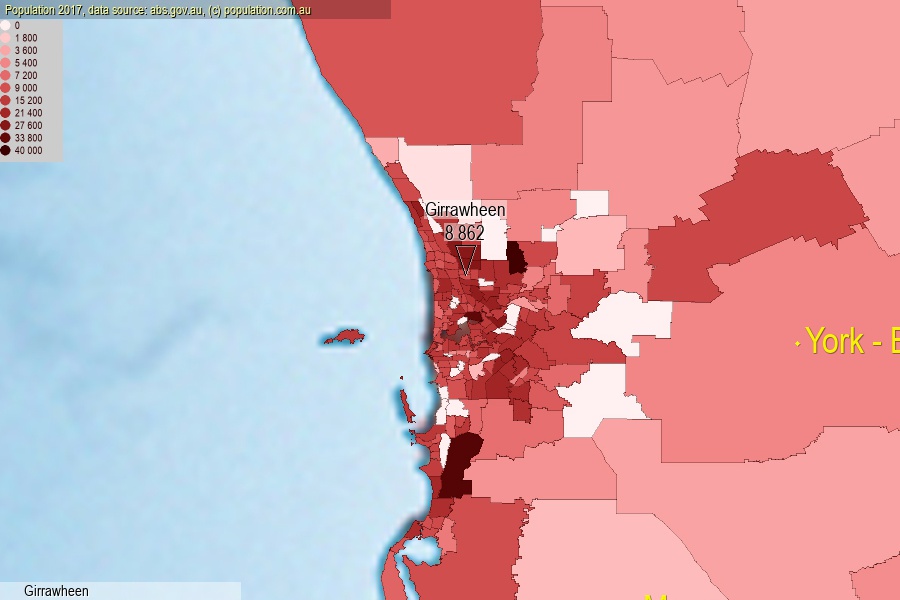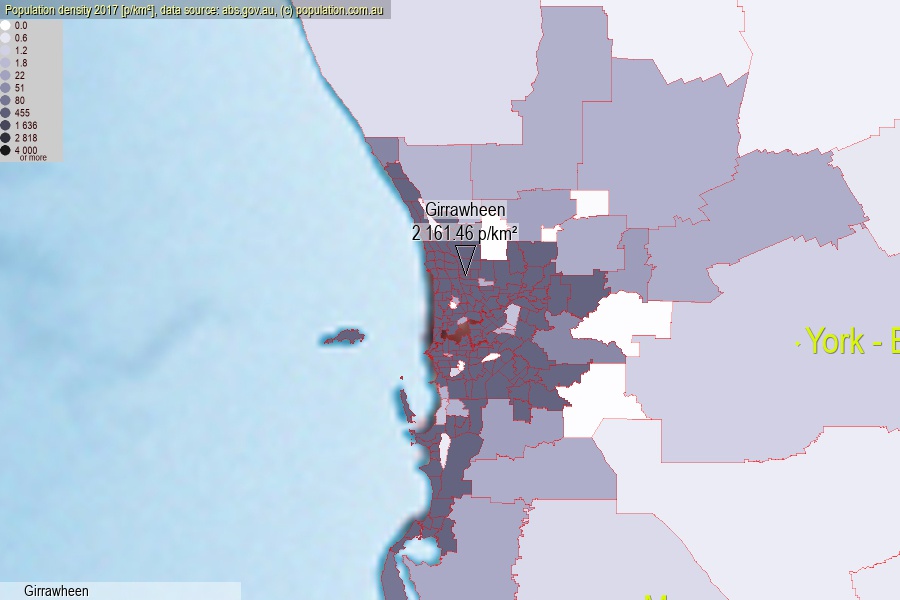 population.com.au
population.com.auLast official estimated population of Girrawheen (as Statistical Area Level 2) was 8 862 people (on 2017-06-30)[2]. This was 0.04% of total Australian population and 0.342% of WA population. Area of Girrawheen is 4.10 km², in this year population density was 2 161.46 p/km² . If population growth rate would be same as in period 2016-2017 (-1.91%/yr), Girrawheen population in 2025 would be 7 592. [0]



Click to enlarge. Girrawheen is located in the center of the images.
Population [people], population density [p./km²] and population change [%/year] [2]
View borders » (new window) [4]
[1991-1992] -2.92 %/Yr.
[1992-1993] -2.85 %/Yr.
[1993-1994] -3.75 %/Yr.
[1994-1995] -1.67 %/Yr.
[1995-1996] -0.56 %/Yr.
[1996-1997] -1.45 %/Yr.
[1997-1998] -1.47 %/Yr.
[1998-1999] -1.23 %/Yr.
[1999-2000] -1.30 %/Yr.
[2000-2001] -2.30 %/Yr.
[2001-2002] -2.79 %/Yr.
[2002-2003] -2.12 %/Yr.
[2003-2004] -0.31 %/Yr.
[2004-2005] -2.00 %/Yr.
[2005-2006] -1.86 %/Yr.
[2006-2007] +1.56 %/Yr.
[2007-2008] +0.66 %/Yr.
[2008-2009] +0.84 %/Yr.
[2009-2010] +0.40 %/Yr.
[2010-2011] +1.67 %/Yr.
[2011-2012] +2.62 %/Yr.
[2012-2013] +2.47 %/Yr.
[2013-2014] -0.33 %/Yr.
[2014-2015] -0.45 %/Yr.
[2015-2016] -1.31 %/Yr.
[2016-2017] -1.91 %/Yr.
[0] Calculated with linear interpolation from officially estimated population
[1] Read more about SA2 and Australian Statistical Geography Standard (ASGS) on abs.gov.au
[2] Population data from Australian Bureau of Statistics (Population and density: 2017; change: 2016-2017)
[3] Digital Boundaries: Australian Statistical Geography Standard (ASGS) 2016.
[4] Border coordinates are simplifyed using Ramer-Douglas-Peucker algorithm.